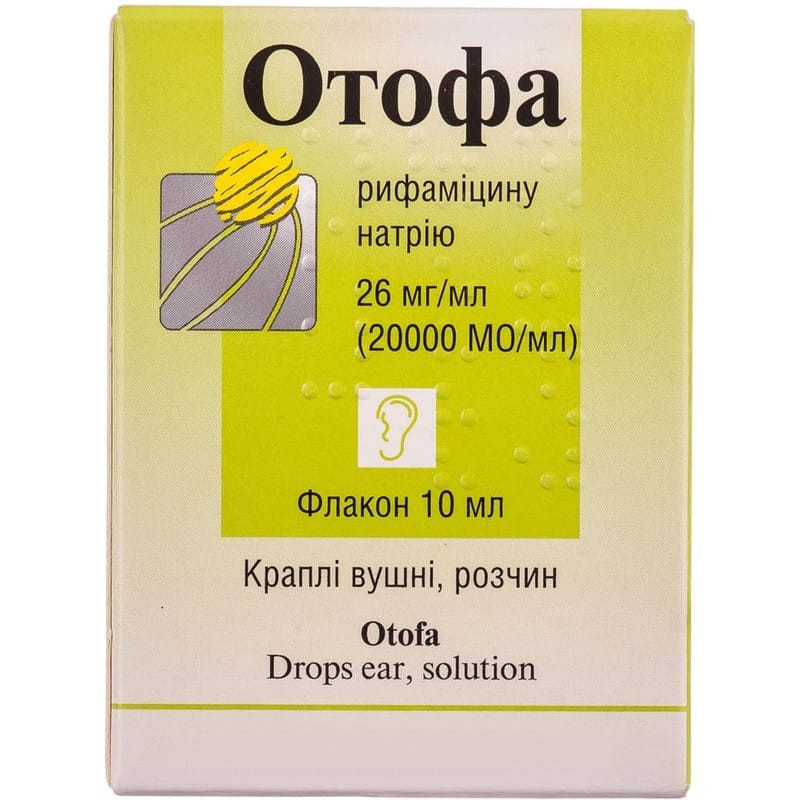



 Secure and encrypted payment processing
Secure and encrypted payment processing We ship to over 40 countries including the USA, UK, Europe, Australia and Japan
We ship to over 40 countries including the USA, UK, Europe, Australia and Japan Guaranteed refund or reship if you haven't received your order
Guaranteed refund or reship if you haven't received your orderPharmacodynamic parameters. rifamycin activity is directed to microorganisms (gram-positive and gram-negative) that cause pathology of the middle ear of an infectious-inflammatory nature.
Rifamycin is a natural antibiotic produced by Streptomyces mediterranei. Inhibits DNA-dependent RNA synthesis and protein synthesis in prokaryotic cells, blocking the initiation of transcription of RNA polymerase.
The range of action of rifamycin includes staphylococci, group A, B, C, G streptococci, peptostreptococcus, hemophilic bacillus, gonococci and meningococci, clostridia (C. difficile, C. perfringens), anthrax bacilli, causative agents of brucellosis, listeri , mycobacteria, chlamydia, legionella, bacteroids, fusobacteria and pasteurella, Cutibacterium acnes, Moraxella catarrhalis, as well as Rhodococcus equi and Haemophilus ducreyi.
Bacteria of the intestinal group and atypical mycobacteria possess rifamycin resistance.
There is no rifamycin activity against Pseudomonas aeruginosa (the causes of at least the third part of the infectious pathology, which is part of the indications for the use of Otof).
Pharmacokinetic parameters. Not studied due to insignificant absorption of the drug into the systemic circulation.
Topical treatment of certain types of otorrhea:
Local - the introduction of drops into the external auditory canal. adults 5 drops, children 3 drops in the affected ear 2 times a day (morning and evening). the introduction is not carried out under pressure.
Using an attic cannula, Otof can be used as a solution for washing cavum tympani.
The duration of therapy (on average 1 week) is individual, determined by the nature and severity of the pathology.
Before instilling the drug into the ear, it is necessary to heat the bottle in your hands to body temperature. With the introduction of drops slightly retract the earlobe; the patients head should be tilted (for about 5 minutes).
At the end of treatment, you must dispose of the bottle.
Hypersensitivity to the active substance of the drug or any of its components.
Allergic reactions (including anaphylaxis, spasm of the smooth muscles of the bronchi, eczema, rashes, and other skin reactions).
The eardrum may become pink.
When using otof, you should adhere to the approved guidelines for the proper use of antibacterial agents.
With the topical use of antibacterial agents, sensitization to the active substance is possible, followed by a systemic reaction.
In the event of a skin rash or other manifestations of a systemic allergy, drug therapy should be immediately withdrawn.
Solution is not administered orally or by injection.
Protect from contact of the skin (ear, fingers) with the dropper of the bottle (in order to prevent infection).
If the manifestations of the disease persist for 10 days of drug therapy, a repeated consultation with the doctor is necessary.
There are no age restrictions.
After consulting a doctor, it is possible to use during pregnancy and lactation.
Does not change the reaction rate when driving vehicles or other mechanisms.
Contact with clothing may cause stains.
The combined use with any other topical drugs is not recommended.
Not found. the likelihood of an overdose is extremely low due to the slight absorption of the drug.
At a temperature of ≤25 ° C.